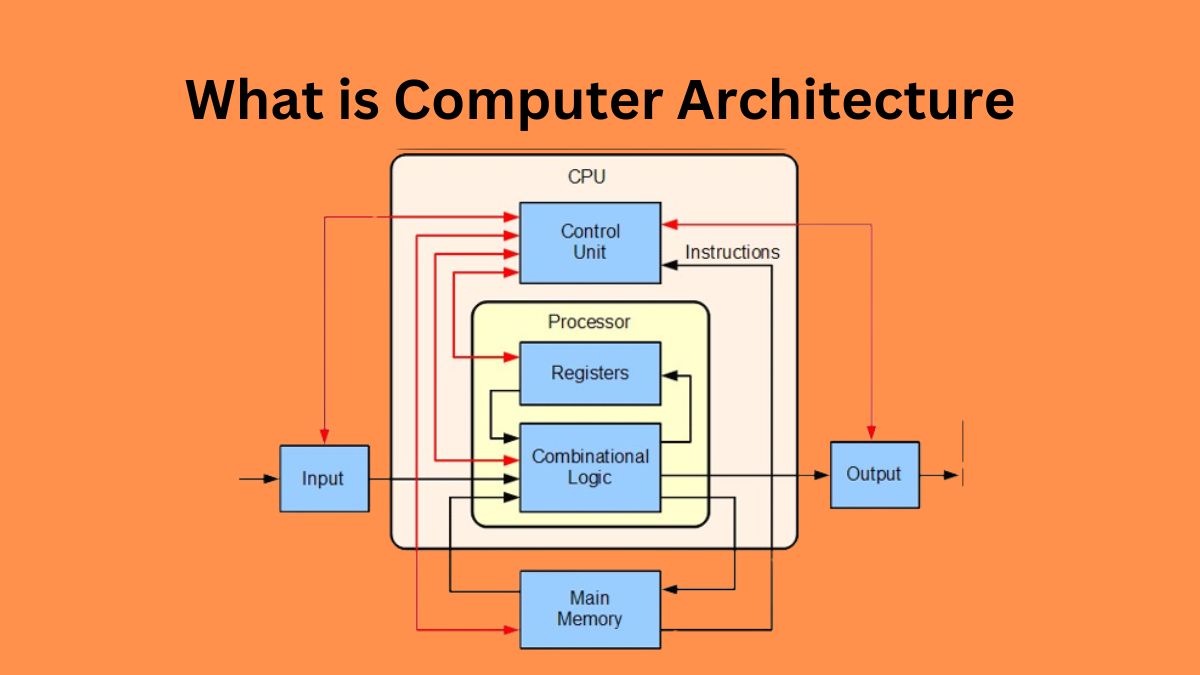Computer architecture is the study of the design and operation of computer systems, from the level of individual components to the interaction of the entire system. It is a broad field that encompasses a wide range of topics, including hardware, software, and the interaction between the two.
In this article, we will learn what is Computer Architecture, importance of Computer Architecture, types of Computer Architecture, structure of Computer Architecture, role of Computer Architecture and what is the future of Computer Architecture.
What is Computer Architecture?
Computer architecture encompasses the organization and design of the components that make up a computer system, and the relationships between these components. It is concerned with the hardware and software that make up a computer system, and how they work together to perform tasks.
What is the importance of Computer Architecture?
Computer architecture is important for several reasons:
- It determines the performance of a computer system. A well-designed computer architecture can make a computer system faster, more efficient, and more reliable.
- It influences the design of software. The way a computer system is architected can have a significant impact on how software is written and how well it performs.
- It is essential for computer system evolution. As technology advances, computer architects must design new architectures that can take advantage of new hardware capabilities.
Types of Computer Architecture
There are two main types of computer architecture:
- Von Neumann architecture: This is the most common type of computer architecture. It is based on a stored-program concept, which means that both data and instructions are stored in memory.
- Harvard architecture: This type of architecture separates the data and instructions memories. This can improve performance, especially for certain types of applications.
Structure of Computer Architecture
The structure of a computer system can be divided into four main components:
- Central processing unit (CPU):The CPU is the brain of the computer system. It is responsible for executing instructions and performing calculations.
- Memory: Memory is used to store data and instructions. There are two main types of memory: primary memory, which is volatile and stores data temporarily, and secondary memory, which is non-volatile and stores data permanently.
- Input/output (I/O) devices: I/O devices allow the computer to communicate with the outside world. Examples of I/O devices include keyboards, monitors, printers, and storage devices.
- Bus: The bus is a communication pathway that connects the CPU, memory, and I/O devices.
Role of Computer Architecture
Computer architecture plays a critical role in the design and development of computer systems. By understanding the principles of computer architecture, engineers can design systems that are efficient, reliable, and scalable.
Future of Computer Architecture
The field of computer architecture is constantly evolving as new technologies emerge. Some of the key trends in computer architecture include:
- Moore’s Law: This law states that the number of transistors that can be placed on an integrated circuit doubles approximately every two years. This has led to a dramatic increase in the performance and functionality of computer systems.
- Heterogeneous computing: This is the use of multiple types of processors, such as CPUs, GPUs, and specialized accelerators, to achieve higher performance.
- Cloud computing: This is the delivery of computer services—including servers, storage, databases, networking, software, analytics, and intelligence—over the Internet (“the cloud”).
Video Tutorial on Computer Architecture
This is a 2.5 hours long video tutorial on Computer Architecture. In this video, Professor Onur Mutlu given a detail lecture on introduction and basics of Computer Architecture.
Conclusion
Computer architecture is a fascinating and ever-evolving field that plays a vital role in the development of computer systems. By understanding the principles of computer architecture, we can better appreciate the power and complexity of modern computers.
Also Read :
